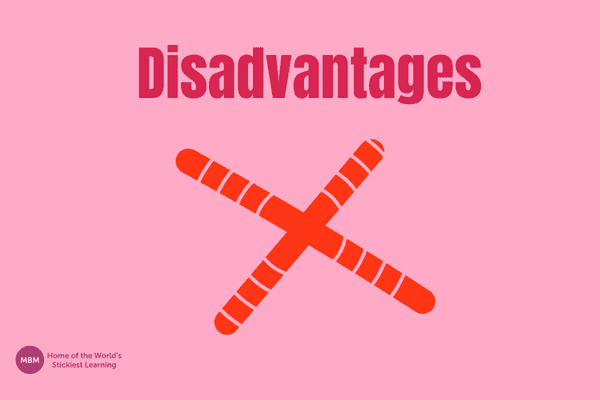It’s About Leading with Flexibility
Why learn about the advantages and disadvantages of situational leadership? Well, as a leader, you want to inspire and guide your team towards success. But what if there was no one-size-fits-all approach to leadership? And what is the most effective way to lead depending on the situation and the needs of your followers?
Enter situational leadership, a theory that has been gaining traction in the world of leadership and management. Developed by Paul Hersey and Ken Blanchard in the 1970s, situational leadership suggests that there is no single “best” leadership style, but rather that the most effective leaders are those who can adapt their style to the situation and the needs of their followers.
But how exactly does situational leadership work in practice? And what are the advantages and disadvantages of situational leadership? Well, in this article, we’ll explore the ins and outs of situational leadership, providing practical guidance for leaders looking to implement this approach in their own work. From assessing situations to adjusting leadership styles, we’ll cover the key concepts and principles of situational leadership, as well as its potential benefits and drawbacks. So if you’re ready to take your leadership to the next level, let’s dive in!
Jump Menu:
- 1 What is Situational Leadership?
- 2 What Are the 4 Leadership Styles Identified in Situational Leadership Theory?
- 3 What Are the Advantages and Disadvantages of Situational Leadership?
- 4 Key Traits of Situational Leaders
- 5 Implementing Situational Leadership
- 6 Situational Leadership in Practice
- 7 Examples of Situational Leaders
- 8 The Impact of Culture on Situational Leadership
- 9 Alternatives to Situational Leadership
- 10 Looking Beyond the Advantages and Disadvantages of Situational Leadership

1. What is Situational Leadership?
Situational leadership is a leadership theory that emphasises the importance of adapting one’s leadership style to the situation and the needs of the followers. The theory suggests that there is no one-size-fits-all approach to leadership and that the most effective leaders are those who can adjust their style based on the situation at hand.
The key concept behind situational leadership is that the most effective leadership style depends on the situation and the needs of the followers. Specifically, the theory suggests that a leader should assess the competence and commitment of their followers to determine which leadership style to use.
In situations where the followers are highly competent but have low commitment, a delegating style may be appropriate. In situations where the followers are low on both competence and commitment, a telling style may be necessary. By matching the leadership style to the situation, leaders can increase their effectiveness and better support their followers’ needs.
2. What Are the 4 Leadership Styles Identified in Situational Leadership Theory?

Situational leadership theory identifies four distinct leadership styles that correspond to different levels of directive behaviour and supportive behaviour. These styles are telling, selling, participating, and delegating. Each style is designed to meet the specific needs of followers based on their competence and commitment level.
1- The Telling Style:
It is characterised by high levels of directive behaviour and low levels of supportive behaviour. This style is most effective when followers have low competence and low commitment and need clear instructions to get started, akin to a teacher providing step-by-step guidance to students encountering a new subject.
2- The Selling Style:
Is also task-oriented, but with a higher level of supportive behaviour than the telling style. Leaders who use this style focus on explaining why certain tasks are important and how they can benefit the followers. This style is most effective when followers have low to moderate competence and variable commitment, and need more guidance and motivation to get the job done. This involves persuading and guiding team members, much like a salesperson convincing customers to embrace a new product or idea.

3- The Participating Style:
This style is more supportive than it is directive and involves collaboration between the leader and followers. Leaders who use this style encourage participation and involvement from their followers, seeking their input and feedback on decision-making.
4- The Delegating Style:
It is characterised by low levels of directive behaviour and high levels of supportive behaviour. This style is most effective when followers have high competence and high commitment and can handle tasks independently. This delegation is comparable to a coach relying on star players to make crucial decisions on the field.
Click the image below for a larger version:

3. What Are the Advantages and Disadvantages of Situational Leadership?
Advantages of Situational Leadership:

#1- Increased Flexibility
Situational leadership allows leaders to adjust their leadership style based on the situation, which can increase flexibility and adaptability. By recognising that different situations require different approaches, leaders can more effectively respond to changing circumstances. This increased flexibility can also help leaders to build trust and credibility with their followers, as they demonstrate their ability to adapt to different situations.
#2- Improved Communication
Situational leadership emphasises communication between the leader and followers, which can improve relationships and collaboration. Leaders who use a situational leadership style are encouraged to seek feedback and input from their followers, creating a more open and collaborative work environment.
#3- More Efficient Resource Allocation
Situational leadership can help leaders allocate resources more efficiently by focusing on the most important tasks at hand. By assessing the situation and determining the appropriate leadership style, leaders can prioritise tasks and allocate resources accordingly. This can help to ensure that resources are not wasted on unimportant tasks or projects, resulting in more efficient and productive use of resources.
#4- Enhanced Motivation
Situational leadership can enhance motivation by aligning leadership style with the needs and abilities of followers. By matching the level of direction and support to the competence and commitment level of followers, leaders can help to create a more motivating work environment. This can help to improve morale and job satisfaction, leading to increased productivity and better outcomes.
#5- Better Decision-making
Situational leadership can lead to better decision-making by considering a variety of factors that impact the situation. By assessing follower competence and commitment, as well as other situational factors, leaders can make more informed decisions about the appropriate leadership style to use. This can help to ensure that decisions are based on a comprehensive understanding of the situation, leading to better outcomes and more successful projects.
Disadvantages of Situational Leadership

#1- Complexity
Situational leadership can be complex and difficult to implement, as it requires a deep understanding of both the situation and the needs of the followers. One way to overcome this disadvantage is to provide training and development for leaders on situational leadership theory and how to apply it in practice. This can help to build leaders’ understanding and confidence in their ability to use situational leadership effectively.
#2- Time-Consuming
Situational leadership can be time-consuming, as leaders need to constantly assess the situation and adjust their style accordingly. To overcome this disadvantage, leaders can streamline their assessment process by focusing on key factors that impact the situation, such as follower competence and commitment. Additionally, leaders can delegate certain tasks or responsibilities to trusted team members, freeing up more time to focus on leadership and decision-making.
#3- Potential for Misinterpretation
Situational leadership can be misinterpreted by followers, leading to confusion or mistrust. To overcome this disadvantage, leaders can provide regular communication and feedback to their followers, explaining their leadership decisions and how they align with the needs of the team and organisation. Additionally, leaders can encourage open and honest communication from their followers, creating a more transparent and supportive work environment.
#4- Inconsistency
Situational leadership can lead to inconsistencies in leadership style, which can create confusion and reduce trust in the leader. To overcome this disadvantage, leaders can establish clear expectations and guidelines for situational leadership within the organisation. This can include training and development for all leaders, as well as regular communication and feedback to ensure that leadership styles are consistent and aligned with the needs of the team and organisation.
Now that you’re informed about the advantages and disadvantages of situational leadership, let’s move to some key traits.
4. Key Traits of Situational Leaders

#1. Adaptability as a Cornerstone
Situational leaders distinguish themselves through their remarkable adaptability, demonstrating a capacity to flexibly adjust their leadership style in response to the ever-changing circumstances and diverse needs of their team members. This trait ensures a dynamic and responsive leadership approach, enabling teams to thrive in various challenges.
#2. Effective Communication Mastery
One key trait shared by situational leaders is their mastery of effective communication. They excel in articulating expectations, strategies, and feedback with clarity, fostering a shared understanding of goals within the team. Open and transparent communication is a linchpin for building trust and nurturing a collaborative environment where team members feel empowered to express their thoughts and concerns.
#3. Emotional Intelligence at the Forefront
Situational leaders prominently exhibit a high level of emotional intelligence, allowing them to understand and empathise with the emotions and perspectives of their team members. This heightened awareness enables leaders to tailor their approach, providing the necessary support and encouragement based on the unique needs and motivations of individuals, ultimately enhancing team cohesion and morale.
#4. Proactive Decision-making Prowess
Proactivity in decision-making is a shared trait among situational leaders. Rather than waiting for issues to escalate, they anticipate challenges and take decisive actions promptly. This proactive stance ensures that potential obstacles are addressed early, fostering a culture within the team that values foresight and problem-solving, contributing to a positive and resilient work environment.
#5. Commitment to Continuous Learning
Situational leaders demonstrate a steadfast commitment to continuous learning and development. Recognising the dynamic nature of leadership, they actively seek opportunities to enhance their skills and knowledge. This commitment not only keeps them abreast of the latest leadership trends but also serves as a model for their team members, promoting a culture of continuous improvement and growth within the organisation.
Now, moving from key traits to practical aspects, let’s discuss the advantages and disadvantages of situational leadership to help you make informed decisions in your leadership approach.
5. Implementing Situational Leadership

1- Assessing Situations:
The first step in implementing situational leadership is to assess the situation and determine the appropriate leadership style to use. Leaders should consider factors such as follower competence and commitment, as well as the complexity of the task at hand. By doing so, leaders can ensure that they are using the most effective leadership style for the situation. Leaders can also consult with their followers to gather additional information about their needs and abilities.
2- Adjusting Leadership Styles:
Once a leader has assessed the situation, they must adjust their leadership style accordingly. This may involve increasing or decreasing the level of directive behaviour or supportive behaviour, depending on the needs of the followers. Leaders should also be prepared to adjust their style as the situation changes, to ensure that they are always using the most effective approach.
3- Communicating With Followers:
Effective communication is key to implementing situational leadership successfully. Leaders should be transparent about their leadership style and explain why they are using a particular approach. They should also be open to feedback from their followers and adjust their style accordingly. By communicating clearly and regularly with their followers, leaders can build trust and improve collaboration.
4- Training and Development:
Finally, leaders should invest in training and development to improve their skills in situational leadership. This may involve attending workshops or seminars or working with a coach or mentor. Leaders should also encourage their followers to develop their own leadership skills so that they can take on more responsibility and contribute to the success of the team or organisation.
Note well, that the impact of culture is crucial just as the advantages and disadvantages of situational leadership for considering its implementation. This is touched later on in this article.
Let’s look at how actual leaders demonstrate situational leadership in areas like business, the military, and technology.
6. Situational Leadership in Practice

1. Business
One example of situational leadership in business comes from the retail industry, where managers often need to adjust their leadership style based on the needs of their sales team. In a busy store, for example, a manager may need to use a more directive style to ensure that everyone is on task and meeting customer needs. However, during slower periods, a more supportive style may be more effective in maintaining morale and motivation.
2. Education
Situational leadership is also widely used in education, where teachers must adapt their approach to meet the needs of their students. For example, a teacher may use a more directive style when teaching a new concept, but shift to a more supportive style once the students have mastered the material. By adjusting their style to the needs of the students, teachers can improve engagement and learning outcomes.
3. Healthcare
In the healthcare industry, situational leadership can be particularly important, as doctors and nurses must navigate complex patient needs and varying levels of expertise among their colleagues. For example, a nurse may use a more directive style when training a new team member, but shift to a more delegating style once the team member has gained experience and confidence. By adjusting their style to the needs of the situation, healthcare providers can improve patient outcomes and team morale.
4. Sports
In the realm of sports, situational leadership plays a crucial role, especially when coaches and athletes must navigate the diverse dynamics of a team. For instance, a coach may adopt a more instructive approach during the initial training phase for a new player, but transition to a more hands-off style once the player gains experience and confidence.
5. Creative Industries
In creative industries like filmmaking, situational leadership is indispensable for directors overseeing diverse teams. During the script development phase, a director may adopt a telling leadership style to provide a clear vision. As the project moves into production, a shift to a participative style encourages collaboration and creative input. In the final stages, such as post-production, a delegation approach empowers specialised team members, such as editors and sound designers.
7. Examples of Situational Leaders

#1- Colin Powell
Colin Powell, the former United States Secretary of State and a distinguished four-star general, showcased his prowess in situational leadership throughout his remarkable career. Interacting with leaders such as Richard Nixon and Mikhail Gorbachev, Powell emphasised the importance of adjusting leadership styles to the strengths and weaknesses of his subordinates. In an interview with Forbes, Powell articulated his approach, stating, ‘I adjust my style, within limits, to the strengths and weaknesses of my subordinates so that I understand what they can and can’t do.’
#2- Steve Jobs
Steve Jobs, the iconic leader behind Apple’s success, often associated with an authoritative telling leadership style, demonstrated a more nuanced approach. Jobs also showcased a delegating leadership style, strategically hiring experts in areas unfamiliar to him, exemplified by the success of Pixar, where he trusted his team to thrive without his direct intervention. Jobs’ multifaceted approach underscores the effectiveness of situational leadership in fostering innovation and success.
#3- John Wooden
In college basketball, John Wooden’s coaching legacy exemplifies the impact of situational leadership. Leading UCLA to ten championships, including an unprecedented seven consecutive victories, Wooden faced the challenge of a constantly changing team. Navigating the challenges inherent in coaching a college team, where the roster evolves yearly, Wooden faced the constant need for reassessment. To maintain success, he embraced a situational leadership style, consistently evaluating team dynamics. Wooden’s ability to support both successful and struggling players underscores the effectiveness of situational leadership in achieving enduring success.
8. The Impact of Culture on Situational Leadership

Culture plays a significant role in how people perceive leadership and how they respond to different leadership styles. As such, it’s important for leaders to consider cultural differences when implementing situational leadership. Here are some factors to consider when working with diverse teams:
1. Understanding Cultural Norms:
Different cultures may have different expectations for how leaders should behave and communicate with their followers. For example, some cultures may value a more directive leadership style, while others may prefer a more participatory approach. Leaders should take the time to understand the cultural norms of their team members and adjust their leadership styles accordingly.
2. Effective Communication:
Effective communication is key to successful leadership, but it can be challenging when working with team members from different cultural backgrounds. Leaders should make an effort to learn about their team members’ communication preferences and adjust their style accordingly. For example, some cultures may place a high value on direct communication, while others may value indirect communication.
3. Building Trust:
Building trust is important in any leadership situation, but it can be particularly challenging when working with people from different cultural backgrounds. Leaders should take the time to build relationships with their team members and show that they value and respect their cultural backgrounds. This can help to build trust and create a more collaborative work environment.
4. Embracing Diversity:
Finally, leaders should embrace diversity and recognise the value that different perspectives and experiences can bring to a team.
9. Alternatives to Situational Leadership – Let’s Step Away a Bit from the Advantages and Disadvantages of Situational Leadership
While situational leadership is a popular and effective leadership theory, it is not the only approach to leadership. In fact, there are several other leadership theories and approaches that can complement or serve as alternatives to situational leadership. In this section, we will explore some of these alternatives to supplement what we already discussed about the advantages and disadvantages of situational leadership.
1. Transformational Leadership:
One alternative to situational leadership is transformational leadership. Transformational leaders focus on inspiring and motivating followers to achieve their full potential. They often use vision, charisma, and emotional intelligence to create a sense of purpose and shared goals among their followers.
2. Servant Leadership:
Another alternative to situational leadership is servant leadership. Servant leaders prioritise the needs of their followers over their own needs and desires. They focus on empowering their followers and helping them achieve their full potential. Servant leaders often use active listening, empathy, and collaboration to build strong relationships with their followers. Servant leadership is particularly effective in situations where followers need support and guidance to achieve their goals.
3. Authentic Leadership:
This is another alternative to situational leadership. Authentic leaders prioritise transparency, honesty, and self-awareness. They focus on building trust and credibility with their followers by being true to themselves and their values. Authentic leaders often use active listening, open communication, and personal integrity to build strong relationships with their followers. Authentic leadership is particularly effective in situations where followers value honesty and transparency in their leaders.
10. Looking Beyond the Advantages and Disadvantages of Situational Leadership

Situational leadership has been a popular leadership theory for decades and has helped countless leaders adjust their approach based on the situation at hand. However, as workplaces and cultures continue to evolve, it’s important to consider the future of situational leadership and how it might need to adapt to stay effective.
#1. Technological Advancements
One of the biggest changes in the workplace in recent years has been the rapid advancement of technology. As AI, automation, and other technologies become more prevalent, leaders will need to adjust their leadership style to accommodate these changes. Situational leadership may need to focus more on building relationships and providing emotional support to followers, as these are areas where machines cannot compete.
#2. Multigenerational Workforce
Another trend that is likely to impact the future of situational leadership is the growing multigenerational workforce. With Baby Boomers, Gen X, Millennials, and Gen Z all working together, leaders will need to be even more adaptable and flexible in their approach. Situational leadership may need to emphasise more communication and collaboration across generations, as well as recognise and value the unique strengths and perspectives of each generation.
#3. Remote Work
Finally, the rise of remote work in recent years has created new challenges for leaders using situational leadership. When teams are working remotely, leaders may not have the same level of face-to-face interaction with their followers, making it harder to assess situations and adjust their leadership style accordingly.
Finally, Our Conclusion on the Advantages and Disadvantages of Situational Leadership
I hope you will agree that it’s helpful to know about the advantages and disadvantages of situational leadership. Specifically, this leadership theory offers a flexible and adaptable approach to leadership that can be applied in a variety of contexts. By assessing the situation and adjusting their leadership style accordingly, leaders can improve communication, motivation, and decision-making.
However, there are also potential drawbacks to consider, such as the complexity of the theory and the potential for misinterpretation. It is important for leaders to carefully assess situations and communicate clearly with their followers to overcome these challenges.
Enjoyed this article? Show your appreciation by engaging with us on Facebook.
Updated on: January 12, 2024




